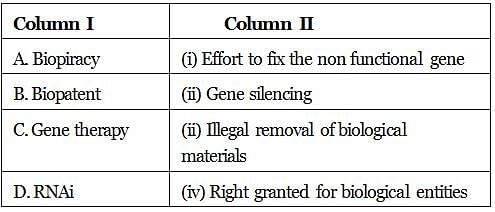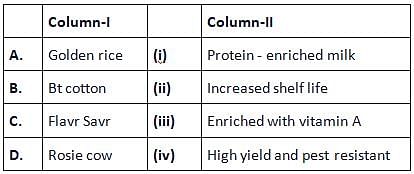Test: Transgenic Animals & Ethical Issues (February 3) - NEET MCQ
10 Questions MCQ Test Daily Test for NEET Preparation - Test: Transgenic Animals & Ethical Issues (February 3)
Which variety of rice was patented by a U.S. company even though the highest number of varieties of this rice is found in India?
Which of the following is not a benefit of transgenic animals?
Match column I with column II and select the correct answer from the given codes.


Sheep Dolly was genetically similar to
Genetic engineering has been successfully used for producing
Which of the following has been covered under the broad patent category?
The organisation which makes decisions regarding the validity of GM research and the safety of introducing GM-organisms for public services is
Match column I containing transgenic organisms with their specific characteristics in column II and select the correct option from the given codes.

A human protein which is being obtained from transgenic animals and is used to treat emphysema is
Which Indian plants have either been patented or attempts have been made to patent them by western nations for their commercial use?
|
12 docs|366 tests
|


















